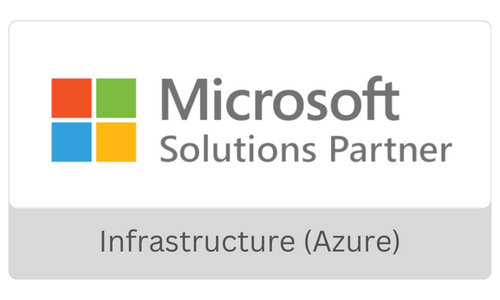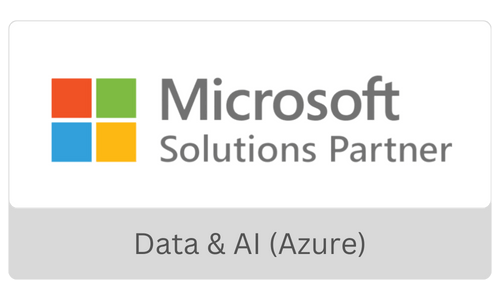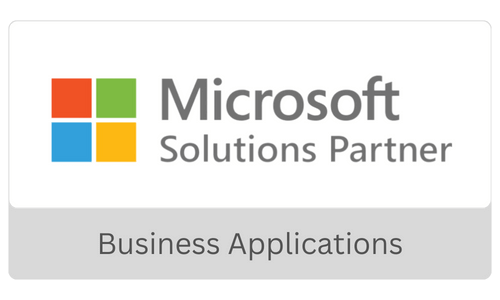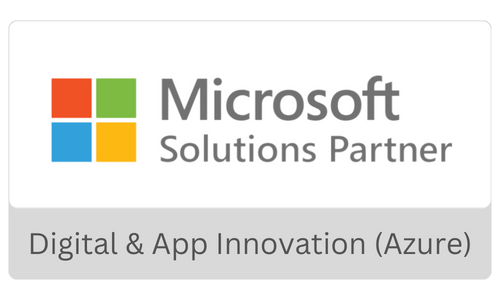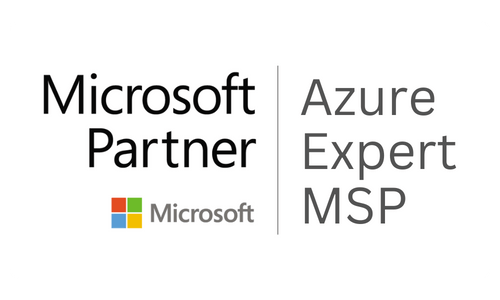Can we build better products and services with AI ML
Data Story Podcast Series
Season: 01 Episode: 05
About Data Story Series
Join The Data Story podcast, where two veterans of the Data & Analytics industry cut through the chase and bring you the most relevant technology trends transforming the industry. James Serra and Khalil Sheikh have helped transform several Fortune 100 enterprises into data-driven enterprises. This fortnightly podcast will equip you with the best practices, tools, and frameworks available that will help you spearhead your business insights journey. Stick around for each new topic discussion and subscribe to this channel.
Guests on this episode

James Serra
Data Architecture Lead at EYJames Serra is a Data Platform Architecture Lead at EY, and previously was a big data and data warehousing solution architect at Microsoft for seven years. He is a thought leader in the use and application of Big Data and advanced analytics, including solutions involving hybrid technologies of relational and non-relational data, Hadoop, MPP, IoT,

Khalil Sheikh
Khalil Sheikh is the Executive Vice President of Saxon. Under his leadership, Saxon is transforming from an IT Staffing and services organization into a new age digital transformation partner and a strong brand. Khalil has extensive experience in the IT services industry and in turning around businesses by promoting growth and profitability.
EPISODE TRANSCRIPT
Download Transcript( as docx )
00:00:18 Khalil Sheikh
Good morning. I’m Khalil Sheikh and with me James Serra.
Today we’ll be talking about how AI and ML is leveraged by multiple industries to modernise their application and services across healthcare, financial services and others. Let’s get it started, so I first I want to welcome all the attendees. Thank you for joining.
Uhm, I want to share some facts around AIML before we jump into some conversational discussion with.
James so startups ambitious AI based companies who are building new product and development about $19.5 billion in 2021 and they expected to go another 24% year after year for the next three years.
There is some numbers out of Gardner is about $37 billion by 2024, so lot of investment is being made by the start.
The second fact is that a lot of product development companies started to integrate AI as part of their product and services.
Microsoft is being a champion IDM, Google several others. So ultimately the job market is getting pretty hard here. On product development side, we are looking debating about 56 to 58,000 open position on DevOps. Social listening, product lifecycle management and advanced analytics. This is a very conservative number, but it seems to be going pretty significantly as we go up. Up. Another fact is the revenue from product and services company that is using AML. Growth across these AML engines. So a lot of interesting data that is started to emerge here. So with that, let me ask a question to James. So James are based on your experience, how has e-mail changed the way product or services? Are delivering value for modern enterprises.
00:02:44 James Serra
Yes, sure. What I’m I’m seeing and I’ve seen for the last number of years while I was at Microsoft with customers is.
A huge demand for AI and machine learning, and I think if those numbers are showing, it’s just going to get. A lot more if I see an avalanche of AI and machine learning coming in the future.
That’s because companies are seeing what they can do with data. They can collect it all centralised at all, and build historical reports off that. And many companies are still in the process of centralising all the data from all these sources, putting it together and getting bigger, better insights into their company and making Better Business decisions. But at from a historical Point of view. Let’s look at the trends over time and. And it’s a lot of effort to get all that data together and clean it and. Master it, join it and have it ready for those historical reporting. But once you do all that, then you can go another step and do analytics on top of that data. So I can build machine learning models off of all that data, I can train it and use it for predictive analytics in there.
And why it’s a tidal wave coming is because still many companies haven’t collected all this data and and so you’re going to have.
00:03:59 James Serra
All those companies along with the other ones that have collected and haven’t yet dipped into AI and ML and so you’re going to just.
00:04:07 James Serra
See a tremendous increase in the companies that are are using AI and ML, especially as they see the art of the possible what they can do with all this predictive analytics.
00:04:17 James Serra
And that’s where a lot of the products have changed in the past few years to make it easier for predictive analytics in there, if you look at the Microsoft realm, all their products.
00:04:27 James Serra
Of automated demo in there and we can talk further about about those individually but it it’s that in the the basic products like a power VI and then they also have machine learning services for the true data scientists.
00:04:40 James Serra
But the idea is, let’s make it easier for somebody using power VI for example, to create these models and not have to be uh. Data scientist with a pH. D in there. But also because of. That now you’re going to see even more implementations of AIML because they’ve made it so much easier to build those models. The barrier to entry is it’s greatly reduced now.
00:05:01 Khalil Sheikh
Got it. Thanks. And in with when we talking about Microsoft AIML like conversational AI and others, can you talk about some of their products which are really gaining momentum going forward because they started to integrate these products within their existing dynamics and SharePoint and others?
00:05:22 Khalil Sheikh
Can you talk about some of those products when it comes to Microsoft?
00:05:27 James Serra
Yeah, I think one of the first ones was in Power BI, Power BI, they created automated mill in there and it’s it is really easy to go through it.
00:05:36 James Serra
You can almost say it’s too easy because you have to be careful. I always say when you’re using automated e-mail because they’ll go through and they’ll look at your data and they’ll suggest models and they’ll suggest the algorithms.
00:05:47 James Serra
To use and within a few minutes, literally, you can have a model trained and start using it in Power VI for that predictive analytics in there.
00:05:56 James Serra
But I would say it’s chunk endulge at if you don’t really understand what you’re doing, you can make things worse for yourself speaking by coming up with a model that’s way off in its predictions. So I think it.
00:06:06 James Serra
You would be wise to get some knowledge, basic knowledge of understanding of the different machine learning models that they have out. There so you make sure you’re pretty accurate when you’re using that.
00:06:17 James Serra
But when you look in power VI, the automated model, it’s just a literally a wizard to go through and it and it actually looks at your data and does suggest the models to use for that. And Power BI as that and power apps and. What we used to be called Microsoft flow, its power automate. Now it has the AI builder in there and and they’re all pretty similar and you just go through these Wizards and you can quickly and easily add. Machine learning capabilities to those various products if I look at.
I was looking at like power apps. They have all these models that you can start out with classifications, form processing, object attention detection, prediction, entity extraction and and some of them are are you can go through and you could.
00:07:05 James Serra
It’ll automatically detect objects for you, and you can use that to help build your model in there. All that stuff comes from. Prior products that Microsoft had built out and now we’re adding it to all these products in there and you even have in. Synapse, they have the same thing. Automated mill, you can go in. There and you can have a table in the spark that you’ve created and you can just right-click. It says I want to build a model. On this and it’ll go through the wizard and have it very easy to come up with this model and then they can deploy the model and then you can start calling it and using it within your applications. A lot of this comes from that cognitive services that Microsoft has, and they’ve embedded those API calls into these products in there and do something new to in.
Synapse that was announced at Ignite is database templates, which are a different name for what they call common data models. And the cool thing about this is. Because I can put this data and I can map any data into this common data model. And now it makes it easier to build machine learning models off top of that common data model ’cause you know what the fields are.
So they’ve only introduced one so far and it’s it’s called a retail one and it allows you to do product recommendations on there. So now we’ve made it easier, you have this common data model, you map your data. Into it and because it knows the field that has this prebuilt retail product recommendation that you can put right on that.
00:08:56 James Serra
Basic users can use those then more of the high end when you look at Microsoft has machine learning services and that is more for the data scientists and you can use machine learning studio in there.
00:09:08 James Serra
Then you can track your models, deploy them, version them, all those other things that you can either do that within that tool and it has its own automated mill.
00:09:18 James Serra
If in addition to just doing things in notebooks on there or you can do it in your own favourite modelling tool and just put the model inside of machine learning services to version it and deploy it and run it and all those things so they have it models now to be able to build for the the basic end user all.
00:09:41 Khalil Sheikh
But thank you. And and where do you see what industries are early adopters of Microsoft App Platform, which is a low code platform versus synapse, their data management platform? What industry do you see are the early adopters we started seeing in healthcare and BFSI in healthcare?
00:10:02 Khalil Sheikh
You have language processing and lot of patient related right 360 degrees to connecting all the dots pharmacies and your hospitals, your hospices and also where do you see that? What are the use cases and who are the early adopt ’cause for Microsoft Power apps on one hand, or synapse on the second hand, or both?
00:10:24 James Serra
Yeah, well, you pointed. Out healthcare, that’s the one I’ve seen that embrace it the most, I think, because there could be such a tremendous amount of savings that can happen in predictive analytics. Dozens of use case one of them that I dealt with health care company.
Somebody who leaves the hospital has to go back in. So how can reduce this? So if we collect all this data on all these patients and predict which ones are likely to be remitted, we can do, we can be proactive and do things.
Before they leave the hospital or or after they leave the hospital so they don’t have to come back in on there. I’ve seen healthcare ones that try to predict.
Health that will deteriorate for somebody so they these companies are hired to collect all this data from employers about their employees and.
Try to predict ones that may have say, a heart attack or or predisposed to certain conditions and then try to be proactive and do things for them.
Suggest a Wellness cheque up for them, because once you go to the hospital the costs skyrocket in there so can. It could be tell me when aeroplane parts going to fail or elevator parts going to fail because that can be another tremendous cost savings in there.
00:12:13 James Serra
Replace a part before it breaks so you don’t have this down time, this extra cost to fix things off hours that could be a lot more expensive, so that’s become very popular.
On with with even in retail trying to to predict who’s going to buy what and that could be a lot save you generate a lot of revenue if you expand that out to a lot of people, if you look at Amazon the way they go and they always predict other books to buy after you buy other things. That’s a machine learning model.
00:12:45 James Serra
Model done in real time. And so that’s the other thing that I’m seeing more of is trying to do real time decision making machine learning models that supposed to kind of running a report at night and predicting who can buy what and maybe sending out emails to them is can we on the fly as they’re making decisions come up with machine learning models that’ll that’ll make them by?
00:13:04 James Serra
Time or or or or change who we focus on for our customer service and things like that. So the we’re, I think we’ll start to see more the real time machine learning come into play on there.
00:13:17 James Serra
And then you even look at hospitals when they can use machine learning in real time on the tools that they’re using in operating rooms, predict that they’re going to break and replace them before that actually happens, which is a tremendous cost saving. So I can probably spot speak for 8 hours in all the use. But it’s important to get those use cases out because customers, once they hear those use cases, they go, oh wow, I never really thought of that.
I can think of that’s a great use case. And then their mind starts going and all these light bulbs go off and they think of all these other use cases.
So it’s showing them the art of possible through use cases or actual demos of what you can do with machine learning that really gets there. Interest and and they can see the value in it.
00:13:55 Khalil Sheikh
Right, right. And one of the use case we came across fraud, waste and abuse in the healthcare space, right? You know, so when an AIML model was put on it for two to three weeks, it showed about $90 million worth of savings that could happen, you know, the largest category. Was, you know, fraud where people are doing double Billings and things like that, right? Or you know?
00:14:22 Khalil Sheikh
Making some kind of intentional spot, right? Then there’s definitely waste and abuse as well in addition to it claim processing, right? You know, when as claims are being processed, how do you make efficient claims?
00:14:36 Khalil Sheikh
And also we have seen a lot of use cases of ermel within the healthcare industry. Same applies to.
00:14:43 Khalil Sheikh
Financial industry as well, right? You know, so if you design the system in in some reasonable format then you get to see a lot of value day one within two to three weeks, not.
00:15:00 James Serra
I was saying to add on to that, and I should have mentioned that that was a good point in claims processing, a lot of fraud that can be caught in the healthcare industry.
00:15:08 James Serra
So a whole another area of savings that could be made in there. And then the financial you talked about, we’ve all probably got alerts from our bank that says, hey, this credit card payment or?
00:15:20 James Serra
Credit card purchase on your car is suspicious. Yes or no? If this is you and that’s machine learning in the background on there analysing, predicting that, hey, there’s a good chance that this could be fraud.
00:15:30 James Serra
Let’s take some action in real time for that, and then a larger scale. I’ve seen banks and other financial institutions look through transactions in real time for money laundering.
00:15:40 James Serra
And some of these could be huge amounts of transactions, 10s of millions of dollars that could be happening on there and they’re trying real.
00:15:54 James Serra
Uh, in banks, when they’re interfacing with customers and prevent customers from getting scanned by doing wire transfers and all that, can you predict that this wire transfer transfer that you’re going to do is?
00:16:09 James Serra
Is something fraudulent in there and warn the customer before they actually do that transformation? So that transaction is so the endless possibilities?
00:16:18 Khalil Sheikh
Right, right. Thanks.
00:16:20 Khalil Sheikh
So how do you see like? The platforms are available, but we you still have to evangelise the company to adopt it as a you know an integrated AI strategy, right? You know so when you go to these companies who are looking for reporting, analytics or even build.
00:16:38 Khalil Sheikh
Building product and services for themselves, I’m talking about from enterprise perspective, how, how do you see that? What are the challenges that companies see to adopt it?
00:16:49 Khalil Sheikh
Is it like lack of understanding of the platform? Is it skills that is available in house? What do you see major challenges for enterprise?
00:16:58 Khalil Sheikh
Is to adopt it as a unified coherent strategy and March towards it. Because it’s not a one time delivery, it’s it has to be span out in in in a time frame, right?
00:17:11 Khalil Sheikh
Yeah, so.
00:17:14 Khalil Sheikh
Give us your perspective challenges and yeah.
00:17:15 James Serra
Yeah, yeah, that’s.
00:17:18 James Serra
Yeah, that’s it’s, it’s a tough question to answer in full because there are so many challenges that I see with customers trying to implement AI and ML and the first is.
The icing on the cake here is the reporting. You can do that. They’ve with power BI. They may never have seen that before and they go, wow, I had no idea you can do that. We were using Excel spreadsheets.
00:17:48 James Serra
And then you show them machine learning and you give him demos and and sometimes your mind are completely blown. They go, we had no idea you can do.
00:17:55 James Serra
Any of this stuff with it? So it’s awareness and that’s the first step is make showing them what can be done with that and and that’s through just those those demos and maybe appeal see and I think the.
So you train it, and the problem I’ve seen sometimes is they don’t train it well or they don’t update the models in there and they get bad results and then.
00:18:26 James Serra
Once they have a bad experience, a lot of times they go all that, it doesn’t work, we’re not going to do it anymore. But the problem was they didn’t.
00:18:35 James Serra
Have the correct amount of data to train it within there as well as they may not have had the great experience that you need for building machine learning models.
00:18:45 James Serra
As easy as we made it, you still want to have a group of data scientists helping you out at your company to make sure those end users are doing it correctly, and then they take it to the next.
00:18:55 James Serra
Level to build more sophisticated models, you need somebody who really understands.
00:19:00 James Serra
All the models available to you. And that’s where there’s a big challenge, because the data scientist is probably the hottest field out there right now, and it’s hard to find data scientists.
00:19:10 James Serra
It’s really hard to find just data. People in general, especially with with the great legs Ignatian, know the great reshuffle that’s going on now.
00:19:17 James Serra
And finding people who will understand building data warehouses ’cause you need that in order to build the models on top of that.
00:19:23 James Serra
So it’s it’s dearth of talent that’s challenging to customers in there and the data scientists people in there, it’s it’s a very different skill set than I I’ve been a DBA and developer and architect for many years.
00:19:34 James Serra
Years and you can say well, how different can be it. It’s still data, but the modelling is just a whole other different level of thinking and it’s a skill that’s hard to acquire if unless you get a lot of training in it and such and so.
00:19:51 James Serra
Because of that, I don’t think you’re seeing as much as implementation because they need the people to go and show the art apostle and build out these solutions on there.
00:19:59 James Serra
And then the last thing I would say is.
00:20:00 James Serra
Just sometimes customers take too long to show value and you always try to get a quick win in there and go in there.
Models. You can collect some just some data in a machine learning and data warehouse. You could even use power. And then get people excited and it unlocks those budgets and they hire more people to go and build out these models ’cause they see the true value of that because in the end you want to put some ROI on that.
00:20:43 James Serra
What is this saving us? And with machine learning you can really do that. You can say look at we implemented this model in it and it increased our sales or reduced our costs.
00:20:53 James Serra
Or and or prevented less people who get reinvented and and so you can put numbers on it very quickly and see the value of that and then it expands more because they they have those tried and true numbers on there. So it’s it’s.
00:21:07 James Serra
But it’s happening and I think you’re going to see more and more of this. As I said, that’s avalanche of AI and machine learning coming, not coming.
00:21:15 Khalil Sheikh
So do you see that if you want to embed? You got to have #1 executive sponsorship focus, a team that is focused on determining the right data set.
What is the security and storage for this data set would be what cloud infrastructure that you will adapt to? How do you integrate?
00:21:37 Khalil Sheikh
AI into existing systems, right? And what kind of animal models or outcomes of that animal model as you’re describing has to be thought through rather than having an intellectual conversation around it, and the outcome then doesn’t does mismatch. Do you see all of this is very important day one to think too.
00:22:00 James Serra
Yeah, certainly. And that’s where and we’ve had this conversation, we get some experts in there, get a consultant company has done it before who can show you the use cases, who understands the data, who knows the right data to collect and the machine learning models to build on top of that it and that could be a great quick win by having somebody who’s done it before come in and show you the art of the possible.
00:22:21 James Serra
And build something out that you can put in production in there. So then you get spread around the company and they go, wow, this is really great stuff.
00:22:27 James Serra
We need to do more of this because your point it’s never end. Once you create some great reports and machine learning models and give it to the end users and you’re making their job easier, they’re saving more money.
00:22:37 James Serra
Their sales were going up, they’re going to go. We want more and more and more of this so it becomes collect more data to build more models on.
To create that expertise from scratch in there so you can get a consultant company come in and then maybe they can train your staff and build something along with them.
Hey, who do we hire for building a data warehouse as well as an analytics platform in there?
Maybe let’s have a consulting company help us in not just with building with the roles and responsibilities and the hiring we need to do to get those right people in there.
So they’re in place going forward and and that’s another big challenge. ’cause as hard as I mentioned for it’s hard to.
And data warehousing is really important and have some expertise who’s done that before, who can guide you along the way so you’re not kind of making your best guess of how you should go and hire people and and build solutions.
00:24:04 Khalil Sheikh
Got it. Thanks. And let’s take healthcare as an example, right. How do we identify and plan AI strategies, for example, business priorities, right?
00:24:15 Khalil Sheikh
How do I synergize my data pipeline? Because my data pipeline across my patients and services may be very distributed right? It may be internal it.
00:24:24 Khalil Sheikh
Maybe third party or whatever or not. How do you address the ethical concerns right? How do I secure by data privacy for my patients, my, my providers and?
00:24:34 Khalil Sheikh
Others scale gaps because what technologies I’m going to adopt right? Whether they’re Microsoft or other like tensor flow or Pytorch or others, right?
00:24:45 Khalil Sheikh
How do I make sure that there is a CI CD or seamless implementation of it where I can keep on checking my different animal models?
00:24:55 Khalil Sheikh
Within RI mindset, right, how do I engage my customers? What do you see as the is the biggest challenge there, the change management, right, because it’s not one time fix all kind of a thing, right?
00:25:08 Khalil Sheikh
Uh, how do I make sure that my business priorities, as well as my my overall deliverance happens when it comes to identifying, planning and execution of AI within an enterprise?
00:25:23 James Serra
It’s not easy. So you you can tell just from that question the challenge in it and and just a couple of.
00:25:29 James Serra
Things like from your question is things like privacy and HIPAA concerned with health care and there.
00:25:35 James Serra
If you start collecting those data, you better be aware of these requirements for securing it and for making it may be anonymous and doing other things so you’re not violating ’cause.
That could be really expensive to get fines and such from that. So you need somebody who understands that process of collecting this. Data and not building a model that Making people aware of data that they shouldn’t be and such and and that gets into the machine learning models as well as your data warehousing on understanding of the privacy and the security is another big win, two especially with.
00:26:35 James Serra
So with customers I always say focus, there’s a lot of things you need to do, but some of the focus should be on the security and then and then the other thing is the cleaning of the data and mastering the data, which a lot of times companies don’t put enough time and.
00:26:48 James Serra
Effort for and machine learning when you.
00:26:51 James Serra
I talked to data scientists. They’ll say they spend too much time cleaning the data, and Gartner had studies that say like 70% of their time is cleaning the data, not doing the machine learning models, which is what their sweet spot is in there.
00:27:03 James Serra
So you need to put together a lot of time and effort and maybe create a centre of excellence for data governance, which is the security and the cleaning.
00:27:11 James Serra
Part of that so you’re making it much easier for the data scientists to go and build those models and not have to clean the data.
00:27:17 James Serra
Because if they start building models with data that’s not cleaned in massive properly, then you can have inefficient or completely wrong models on there. So that’s another piece of it. So we can probably talk for a few hours on all.
00:27:28 James Serra
Those things that you have to be aware of and and you just have to get experience with that. And so as a company start with small and build something out, get some help.
00:27:38 James Serra
Outside of your company to and then have overtime by building those solutions and and getting help you can have that internal expert.
00:27:49 James Serra
Peace and showcase certain things that will unlock that budget and get more people hired and expand on that team in there.
00:27:58 James Serra
But the finding that that team of of data warehousing and machine learning data scientists and how they work together is really important too, because you need to have proper communication and understanding of.
00:28:09 James Serra
What each group is prioritizing and what their roles and responsibilities are, because I have been in this industry for 35 years have seen a lot of projects fail, it’s because it’s not so much the technology just because of the lack of communication that’s and the lack of defining roles and responsibilities and the lack of getting experts in different areas that all work together really well and and data warehousing and machine learning is hard.
00:28:38 James Serra
There’s a lot of challenges. There’s no shortcuts. Despite all the latest buzz words in there. It it takes a long time to to build this stuff out and why you can get quick wins, you have to understand to get a full out big enterprise wide system is going to take a.
And a lot of planning on there and and be prepared for a long process of but once you do once you develop that the the profits they increase revenue, the cost savings on there can be tremendous and you have to do it in the in this world with all your competitors may be doing it and so you want to.
00:29:19 Khalil Sheikh
Alright, thanks. So James, where do you see Microsoft stand because Microsoft has adopted on their product development platform like poweramp, AI and cognitive learning and IBM is also another player which is using.
00:29:40 Khalil Sheikh
On on the on the app side, product side, but also on their data management platform. So Microsoft and IBM have adopted AI in a big way.
00:29:50 Khalil Sheikh
Uh versus Amazon and Google also are chasing that down. Where do you see Microsoft future is when it comes to?
00:29:59 Khalil Sheikh
Fully automated AI platforms that they are offering today versus other players in the marketplace.
00:30:08 James Serra
Yeah, well, I’m.
Biassed since I’ve been using Microsoft since the 80s and have seen that these newer players come around and done great jobs, and I know Google is kind of known for a lot of their machine learning AI.
Tools that they’ve that they’ve created on the. There and and you have to look at some of these tools and say are they enterprise wide tools or they just were smaller individuals and if they’re enterprise wide how do we use them and not have an exorbitant paint costs for for those. So that’s again where you can you need somebody who understands all these different approaches in the Microsoft.
00:30:41 James Serra
World so we’ve talked about half a dozen different ways of building out models or what’s the best.
00:30:45 James Serra
Way and but a lot of it depends on each companies use case and the data that they have, the type of data, the speed of the data and and where their ultimate goals. What’s the end result?
00:30:55 James Serra
Now we say that kind of work backwards with customers is come up with some of these use cases where you can say we can really save a lot of money if we have a machine learning model do this and then say, OK, let’s go and build the infrastructure to get to that.
00:31:06 James Serra
Point on there, so we have that end goal and you get the users involved so they’re excited about.
00:31:10 James Serra
It and in the Microsoft realm.
00:31:13 James Serra
I think you have to understand there’s those automated mill that could give you.
00:31:17 James Serra
The quick wins.
00:31:19 James Serra
And so there’s a place for those you wouldn’t want to go and use those for everything because when you want enterprise level solutions and more flexibility, more features, you want to go to the high end stuff that most services and there. And so it’s just understanding all those products and then how can you.
So you’re not losing work that’s created by in these end users on there. And then also there’s a lot of it has to be training on there.
00:32:00 James Serra
So you need customers to know how, especially in machine learning, to know how to use these tools, and you give them the training and.
00:32:08 James Serra
Make them be aware of the limitations and where should they? At what point do they say oh, this is getting above my understanding of machine learning models.
00:32:17 James Serra
We need to go and move this to the data scientist team to build something out because it’s this is too much for for what I’m trying to do in there. So it’s so it’s that understanding and.
00:32:41 James Serra
And then there’s the cost of running them, which is just really a function call, which sounds like it could be cheap, unless you’re making millions of these calls.
00:32:49 James Serra
So a lot of times with customers you can say, look, this is the best solution for you. It’s going to cost us much and they may go, oh, that’s too much, can we want another solution that’s not as costly, I’m willing.
.
00:33:02 James Serra
On there. So that’s where you need to understand all the capabilities of products, but also understand the pricing on that because you don’t want to be surprised and get a bill that you made millions of machine learning calls and you have these, this hundreds of $1000 bill that you weren’t expecting or use all these compute to train the models on there and that whole area can be.
00:33:22 James Serra
A lot to understand with the compute options in training these models and getting away from, hey, let’s try to do everything on my laptop. On my desktop, you’re very limited on the compute power you get to the cloud and there’s unlimited.
00:33:40 James Serra
Of machines that have virtual machines that have hundreds of cores that you can use. And maybe that’s worth it because it’ll create your model in a much quicker amount of time if you want to pay more. Of those and then do a cost evaluation on there, so you’re not surprised by that Azure bill at the end of the month.
00:34:00 Khalil Sheikh
Thank you. And one of the things when we talk to our customers, right, as you also pointed out, there are lot of AI activities that they do fails, they don’t produce the outcome that they seek or at least there’s a disconnect between the business priorities and the technical deliveries. So what, what?
00:34:20 Khalil Sheikh
Can be avoided what what needs to be done in order to make sure that your business priorities and what your outcomes are matched by and understood by the technical teams?
00:34:30 Khalil Sheikh
Uhm, there’s lot of exercises that we have seen people have done, the technical team has done that doesn’t generate.
00:34:38 Khalil Sheikh
The the business outcome, whether it’s from a data analytics perspective or even business process automation perspective, right, you know, so there’s always this SketchUp game. How do you resolve that based on your experience?
00:34:52 James Serra
Yeah. That’s where again I touched on it is you try to have what is the end goals think and so we’ll have brain time storming stations sometimes with customers, what are some things you can do with AML after we help them understand what that is.
00:35:06 James Serra
And with the capabilities of that, what are some of the things you can do? They and their health care may go, yeah, we want to lower it remittance rates in there and then you start posting all these notes and then we we want to do predictive maintenance on machines.
00:35:19 James Serra
We want to to find fraud and you start putting all these on a, on a, on a board and then you start digging in.
00:35:27 James Serra
Deeper. Well, OK, let’s try to figure out what would be the return of investment of this. How much money can you save? Can you put some numbers on it?
00:35:33 James Serra
Ballpark. And then you put all that and then you say, OK, now let’s look at how hard it would be to implement each of one of these.
00:35:40 James Serra
Do we already have the data or do we have to create the new data? So now you’re having what you’re trying to accomplish and the cost of it as far as.
00:35:50 James Serra
To build and then their ROI and once you get all those you can start prioritising them and try to find something, ideally that you can build quickly and has a high ROI and that gets the highest priority so you have all that and this is done with the end user.
00:36:05 James Serra
The business users on there ’cause they understand better than it the value they can get out of these machine learning models that you build.
00:36:13 James Serra
And then once you have that, then you go to it ’cause it could always. You gotta be careful ’cause they can always see anything else is just an extra burden that they have to do and.
00:36:23 James Serra
And and the way I always try to have it is, is they work with the business users and business users are part of the process. So they’re they feel like they’re involved and are getting excited.
00:36:33 James Serra
About it and they also are camping you because they want to be successful and you want them to be successful.
00:36:40 James Serra
And then you work closely, they can validate things you’re dealing to make sure they’re right because usually there’s a separate team from the business users and so you have to have that communication and work together really well and then you have some of those.
00:36:53 James Serra
Quick wins that come out of that and then they can showcase that to other users to say look what we’ve done, look at how much money we say.
And they go, wow, that’s incredible, I want to do something similar. And then you get the snowball effect of everybody wanting to do it all.
00:37:06 James Serra
The just the challenge is to get those business users involved early on and and focus on them for the ROI and not any other group or it, it’s it’s those business users in there. So a lot of the initial conversations I had with customers.
00:37:20 James Serra
Are the business users and doing those brainstorming sessions and showing in the art of hospital and then we get it involved later?
00:37:28 Khalil Sheikh
But thank you, we are end of session. So first I want to thank everyone who has attended this session. Appreciate the time.
00:37:37 Khalil Sheikh
Secondly, our section global is our data management and analytics company and we embed AI into your data platforms.
00:37:48 Khalil Sheikh
In addition, we also do a lot of power product development or particle jelling and embedding AI into your product engineering as.
00:37:56 Khalil Sheikh
Well, so please reach out to us if you have any questions, any concerns within your your AI model and you want to have a safe harbour conversation to explore? What are your choices?
00:38:08 Khalil Sheikh
We are cloud agnostic. We are technology agnostic. What it really means is like we work with multiple e-mail platforms. So.
00:38:16 Khalil Sheikh
If you already have chosen a platform, we can help you support you there as well versus if you at an early stage and drafting a strategy, we can provide you some advisory services in a safe harbour mode to give you choices. Again, thank you so much, appreciate the time and look forward to the next podcast.
00:38:36 James Serra
Thanks everyone.
00:38:36 Khalil Sheikh
Exactly. Thank you, James I appreciate it.

